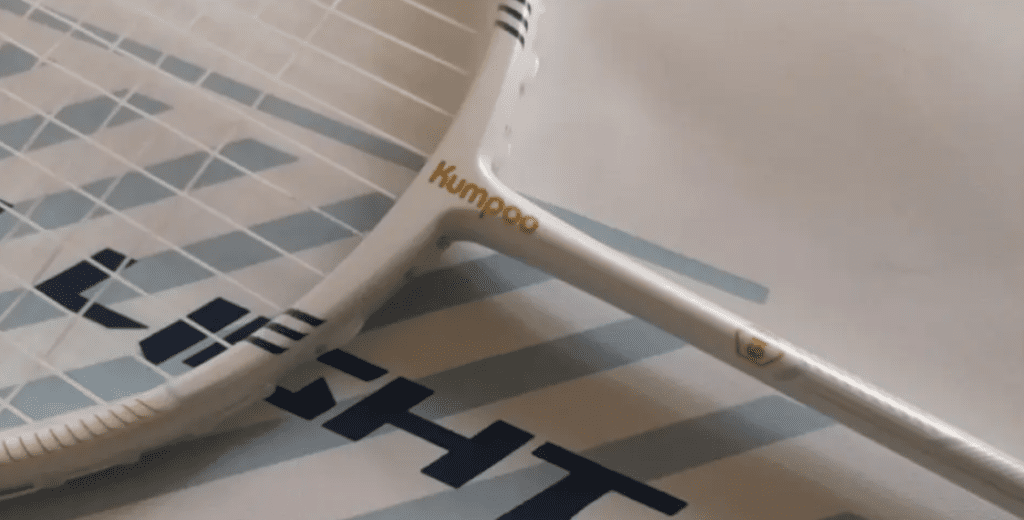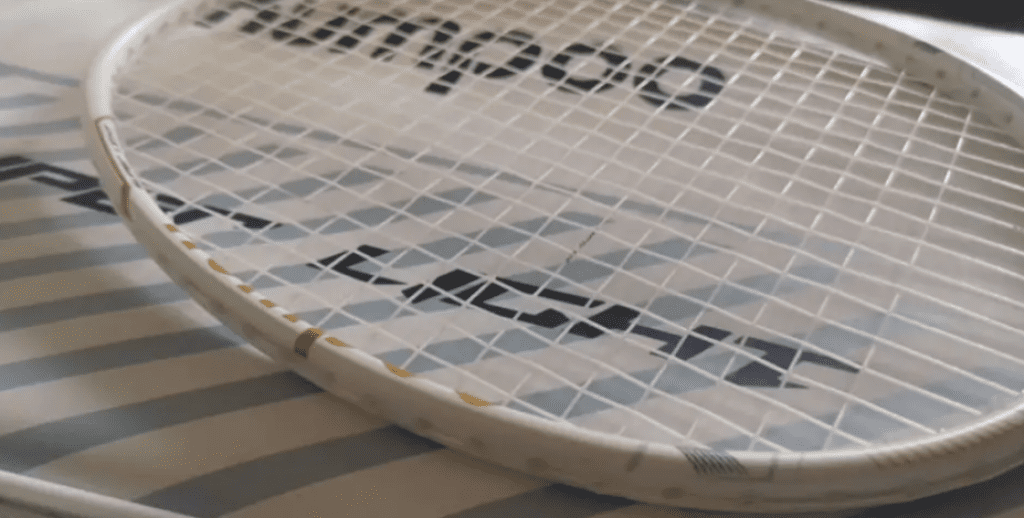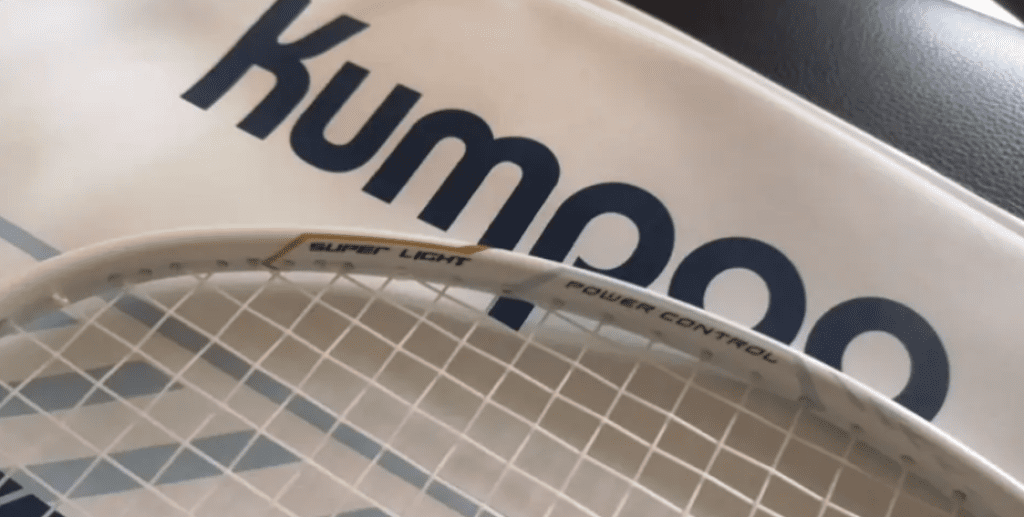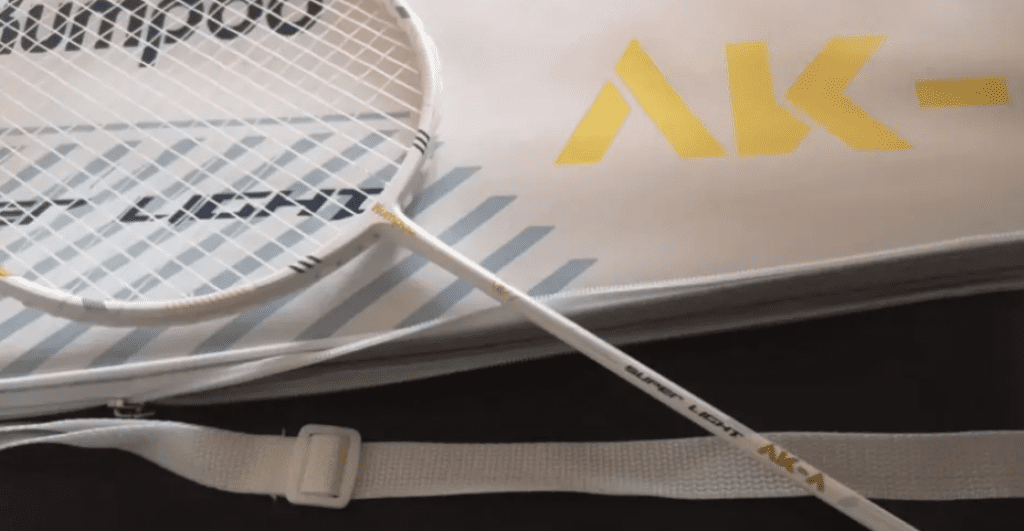Kumpoo has always had its share of standout products, but often these standout models don’t align with the broader expectations of badminton players, leading to frequent criticism. My personal judgment on this is independent of the brand’s promotional tactics.
The current model is quite impressive; I’ve enjoyed using it, and it performs well for friendly matches with friends. As long as it’s not used in matches with stubborn opponents or high-level play, it can still deliver a good performance. It’s especially suitable for beginners, particularly female players, who may lack strength.
I’ve been acquainted with Kumpoo from their unconventional 9U and 10U rackets, so I’m confident about this one. Thanks to a friend for providing the test equipment.

Specifications: 6U G5, with a base, total weight 84.0g, balance point 297mm, shaft length 217mm, moderate stiffness, box frame, 76-hole string bed, 9-3 o’clock string grooves, warranty 30 pounds, string tension 24-26 lbs with Kumpoo K70 string.
The pure white color, although overused by many manufacturers, is another iteration for Kumpoo, which reminds me of the K520. The golden shaft number and frame stickers, combined with the minimal parameters and tech descriptions, are very simple. Perhaps due to cost considerations, there isn’t much to say about the appearance, but the white color hides imperfections well. I’ve just seen this type of design too many times; the AKA’s appearance is fine. Why the name AKA? As Known As?

This racket has an interesting setup, available only in 4U and 6U sizes, skipping the 5U version for unknown reasons. The 6U version aligns well with mainstream ultra-light rackets. With a moderate shaft stiffness and a high balance point, it facilitates leverage. The racket borrowed from a friend has a thick grip, and even without removing the base, the balance point is close to 300mm.
In practical use, the AKA provides both lightness and leverage. The shaft has been tuned adequately to avoid overly soft hitting, unlike many ultra-light rackets that feel like hitting cotton. Among 6U rackets, the AKA doesn’t match the K600 in power, but it still offers acceptable speed. For its target audience, being able to hit the shuttle to the baseline and maintain basic accuracy is sufficient, and the AKA excels in this regard.

Unlike the K600, which aims to combine ultra-light weight with increased power, the AKA focuses on being a friendly and consistent racket. Balancing different features is understandable, and while it’s possible to achieve such combinations at higher costs, the AKA aims to be straightforward.
In use, the AKA excels in smoothness during mid-court drives and back-court smashes. Both functions are performed well, typical of non-extreme ultra-light rackets. When in control, the box frame and shaft of the AKA allow for a fast shot with good accuracy. Advantages accumulate gradually, and using the racket effectively for kills, chasing, and combining with net play is a reliable scoring method.

Of course, against higher-level opponents who consistently push the shuttle to the baseline, the AKA’s consistency alone won’t be enough. However, it is excellent for defensive play and casual matches. Sweet spot, elasticity, and swing weight are all well-suited to the intended needs. Having used many 6U rackets recently, I find the AKA has improved product quality and performance through material optimization. Its shaft’s explosiveness may not be the strongest, but its recovery speed after deformation is among the best, contributing to its superior consistency compared to other ultra-light rackets.
If you’re feeling fatigued by other brands’ designs and need an ultra-light racket of this level, give the AKA a try.


Leave a Reply